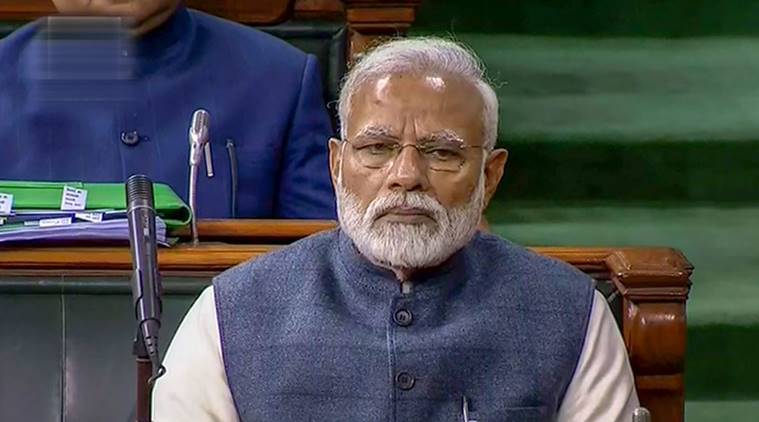In Rafale deal, key players were kept out of the loop
In the mist that envelops the Rafale deal, one thing is clear: the last word has not been said on the subject.

The Rafale deal is unravelling faster than the BJP expected. If the government and the ruling party thought that they could keep the lid on the most opaque defence purchase in recent times, they were wrong, and they were rudely dragged out of their comfort zone. The credit goes, largely, to The Hindu and Mr N Ram, chairman of The Hindu Group’s publishing company. However, there were — and are — other important players who deserve to be complimented for standing up to the enormous pressure of the government and its leaders.
New and Flawed Deal
First, the facts that have tumbled out of the closet.
1. It is now confirmed that the Rafale deal was a one-man show of Prime Minister Modi. Mr Modi was the choreographer, it was carefully orchestrated, and all important decisions were taken by the Prime Minister’s Office (PMO).
2. The decision to scrap the UPA-era memorandum of understanding (MoU) was not taken first for cogent reasons. The decision to enter into a new deal was taken first and, since the earlier MoU was standing in the way, the MoU was scrapped.
3. Key players were kept out of the loop: the defence minister, the external affairs minister, the finance minister, the Air Force, the Defence Acquisition Council (DAC) and the Cabinet Committee on Security (CCS).
4. On April 8, 2015, in Paris, the foreign secretary told the media that the Rafale negotiations were at an advanced stage among the two governments, Dassault and Hindustan Aeronautics Ltd (HAL), and Rafale was not on the agenda of talks between the prime minister of India and the president of France. Two days later, on April 10, after a one-on-one meeting between Mr Modi and Mr Hollande, the new deal was announced!
5. The new deal was indeed a new deal. Not 126 aircraft, but only 36 aircraft. Not at the earlier negotiated price, but a new price. Not the previously identified offset partner (HAL), but a new offset partner (a private company with no experience of manufacturing aircraft or aircraft parts). These decisions were taken at the meeting between the two leaders on April 10, not after negotiations between the two negotiating teams.
Waivers and Omissions Galore
6. ‘Payment security mechanism’ for the Rs 60,000 crore that India would pay to the two suppliers, Dassault and MBDA, was thrown to the winds. There will be no sovereign guarantee, no bank guarantee, and not even an escrow account. All these waivers were directed by the PMO.
7. The mandatory anti-corruption clauses were omitted. There will be no clause against paying commissions, no clause against engaging agents, no pact on integrity, and no access to the account books of the suppliers. These decisions too were taken by the PMO.
8. There was a powerful note of dissent by the three domain experts on the Indian Negotiating Team (INT) — Mr M P Singh, Adviser (Cost); Mr A R Sule, FM (Air); and Mr Rajeev Velma, JS & AM (Air). The eight-page dissent challenged the recommendations proposed by the other four members of the INT and tore into the numerous deviations and waivers that were being pushed by them.
Compromised ‘Supreme’ Audit
As each fact tumbled out, the government scrambled for cover. At first, the government tried to take refuge under the judgment of the Supreme Court but that gambit failed because the judgment itself made it clear that the Supreme Court had declined to examine the issues of pricing and the reduction in the number of aircraft. When Parliament protested, the government tried to silence Parliament — through its brute majority in the Lok Sabha and through encouraging peremptory adjournments of the Rajya Sabha.
The government may have hoped that the CAG’s report will bail it out. The report was presented on the last day of the session of Parliament. Far from saving the government, the report exposed the fact that the government had tried and succeeded in muzzling the independent voice of the CAG, the supreme audit body of the country. The report also debunked the government’s claims on cheaper price and quicker delivery schedule.
The CAG seems to have initially resisted the demand for redaction — there was no precedent, the CAG said — of the commercial details, but its feeble resistance dissolved following a stern letter from the government. The result is tables that make no sense and a report that is as opaque as the deal that the CAG was supposed to examine. The report is noteworthy not for what it said but for what it has not said. The CAG did not comment
* On the undue monetary gain to the suppliers due to amortisation on a smaller number of aircraft (36 against 126);
* On the monetary risk to India because of the absence of any payment security mechanism;
* On the probability of Dassault and MBDA adhering to the delivery schedule given the huge backlog of unexecuted contracts for Rafale aircraft;
* On the perils of omitting the anti-corruption clauses, especially the non-access to the account books of the suppliers;
* On the impact on the operational capability of the Air Force which will get fewer aircraft; and
*On the powerful dissent note recorded by three members of the INT.
In the mist that envelops the Rafale deal, one thing is clear: the last word has not been said on the subject.
This article first appeared in print under the headline: A government running for cover







































No hay comentarios:
Publicar un comentario